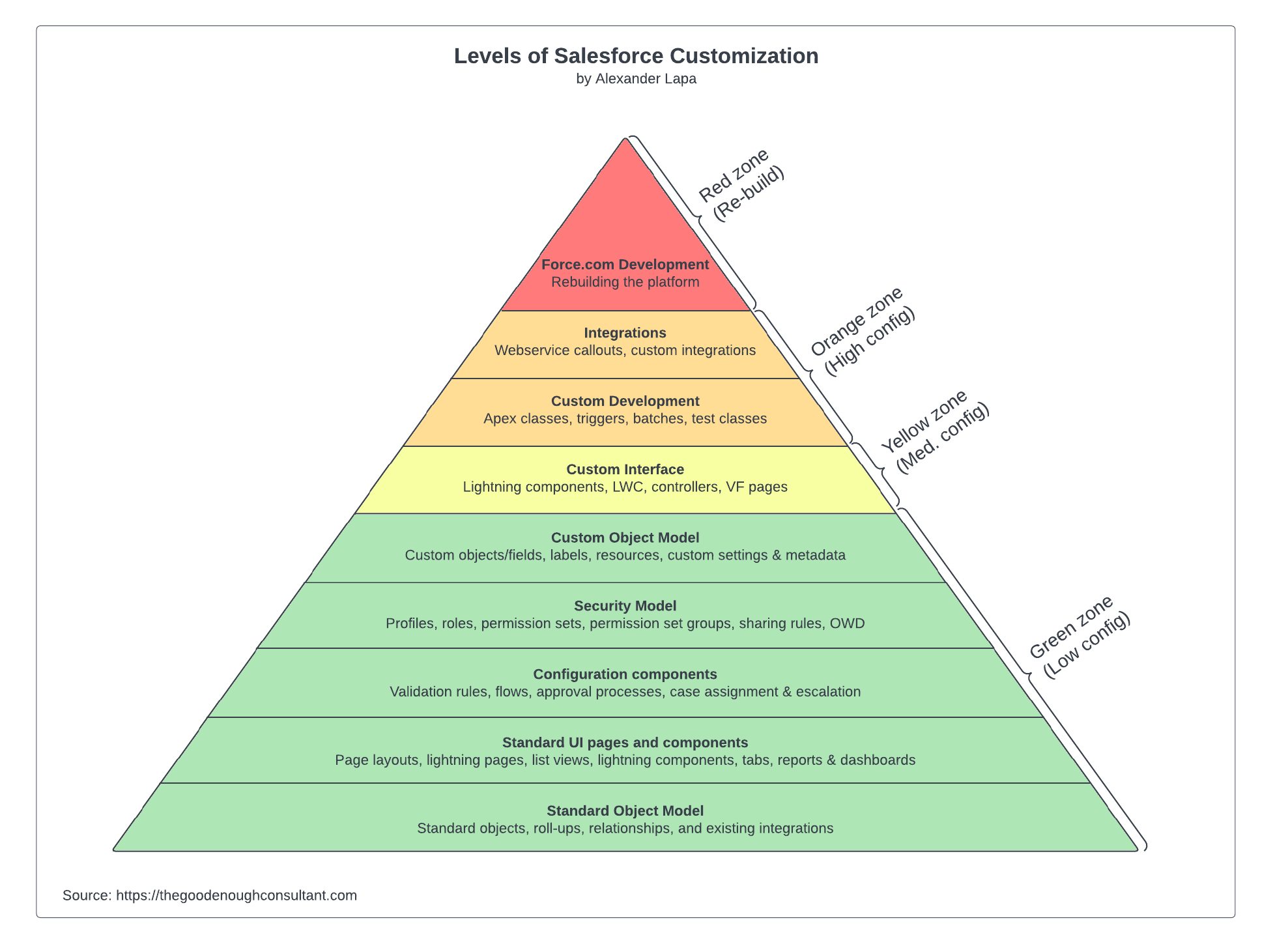As you know, Salesforce is much more than just a CRM – it’s a platform.
As such, its functionality is designed to be extended and customized according to your client’s business needs. The advantage is the platform can do “anything you want”, and the disadvantage is the platform can do “anything you want”.
This means instead of having strict rules and one way of doing things, there are best practices and recommended ways of using the platform. So although Salesforce provides the flexibility for customizations, it’s better to “color within the lines” or build things that align with these recommendations.
This translates to keeping things simple and using as much standard functionality as possible. By doing this, you
- prioritize declarative functionality over custom (“no-code solutions”)
- ensure updates to Salesforce and packages will be smoother
- have no-to-low technical debt
The figure below displays the various levels of customization in the Salesforce platform. It is recommended your solutions attempt to stay within the green zone for the majority of your implementation.
The takeaway
When tackling a problem, start with a “configuration first” approach. If the problem cannot be solution this way, then work your way up the pyramid. Try to avoid the high configuration zone when possible, and avoid the rebuild zone completely.

